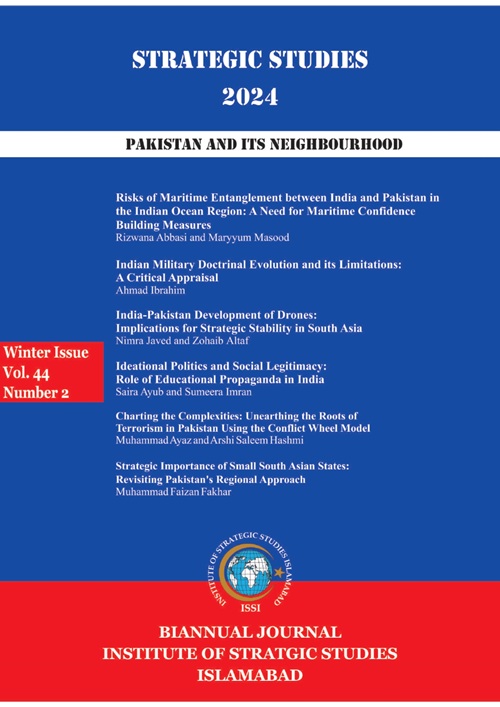Indian Military Doctrinal Evolution and its Limitations: A Critical Appraisal
Keywords:
India,Abstract
India’s military doctrinal evolution has taken place according to New Delhi’s diversifying threat perceptions. This research article discusses the evolution and fundamentals of Indian military doctrines with respect to John Mearsheimer’s concept of three basic offensive war strategies. The research has highlighted the deficiencies in Sundarji doctrine which led to the transition towards a swift and limited war strategy in the form of Cold Start Doctrine (CSD). This article evaluates the strengths and limitations of CSD, and how it failed to achieve its full functional capacity due to operational shortcomings of the Indian military. The article further briefly discusses Pakistan’s Full Spectrum Minimum Credible Deterrence (FSMCD), involving employment of tactical nuclear weapons (TNWs) to lower nuclear threshold for thwarting India’s CSD, as well as Quid Pro Quo Plus (QPQP) strategy which incorporates nuclear as well as conventional forces to deter India’s aggression at all levels. The study also assesses Uri (2016) and Pulwama-Balakot Crisis (2019) to analyse the Indian military actions and Pakistan’s retaliation with respect to transforming Indo-Pak military doctrines. The article also deliberates India’s future aspiration of theaterisation, aimed at creating unified theatre commands to enhance operational efficiency. The enduring security dilemma between the two nations is used as a framework to understand why India is undertaking doctrinal transition and incorporating force theaterisation. The article concludes by exploring the challenges which India is likely to face for theaterisation of its military forces and its potential impact on the South Asian strategic stability.

Published
How to Cite
Issue
Section
Copyright (c) 2025 Strategic Studies

This work is licensed under a Creative Commons Attribution-NonCommercial 4.0 International License.



